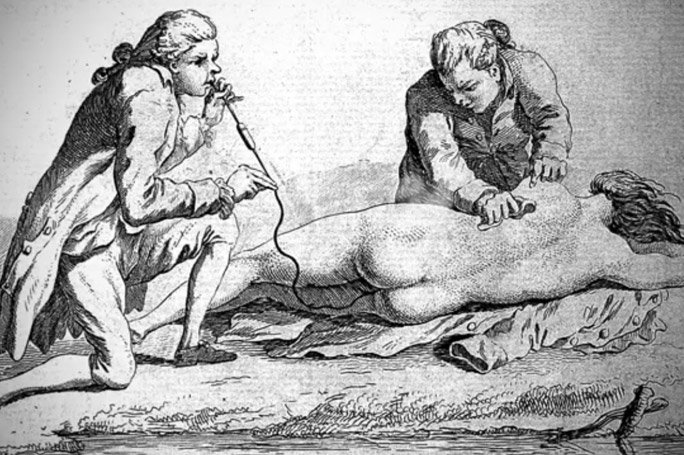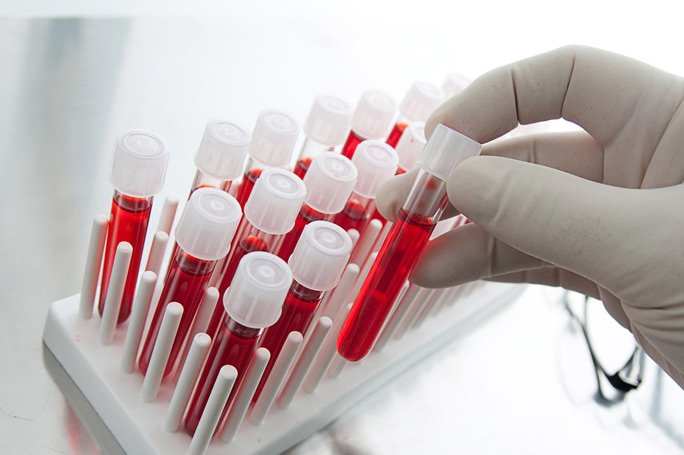Art of Detox has for many years, held the Cleansing of the Liver as a theme essential to Human Vibrancy.
Our approach is to initially do two Epsom Salt Liver Cleanses and then continue with a plant fat method such as our Liver Gallbladder Cleanse (L/G) Product or simply taking a nightly tablespoon of Olive Oil prior to bed.
This months article below goes into great detail on a third method, and will show how to get even more leverage out of the L/G Cleanse (Plant Fat Formula), by aligning our selves and understanding the livers mechanism.
The following article details an innovative mechanism to clean the liver using a common easy to obtain food. The food, in this instance, falls under the category of legumes. The mechanisms of why it cleans the liver is as extraordinary as it is effective. The method is as easy to implement as it is profound.
The only drawback I see with this method discussed below is if one pursues a RAW/Vegan plant-based diet, all hardcore proponents of the Natural Hygiene path will say that the consumption of beans comes with a price ie they are acid mucus forming. A little compromise may reap huge rewards here.
The method is good for adults and children alike who have long-standing issues with various forms of blood poisoning (think parasite toxins), allergies, challenges to lose weight or basically anyone who is struggling to get rid of toxins within the body.
To provide the background to how this method came to the fore. The following story needs to be told.

Back in the 1989, a woman by the name of Karen Hurd was challenged by her 18-month-old daughter being poisoned by household pesticides. After 6 months, the doctors told her that her daughter would not survive the liver and kidney damage. To cut a long story short, Karen did a significant amount of research to understand about bile and its mechanism within the body. She studied what bile does and how to rid toxic bile.
One of the basic things Karen did was to provide food that attracts bile to be moved or stimulated. She found a food that her research pointed her towards was simply legumes in the form of beans.
Through a process of trial and error, she simply gave her child beans at regular intervals throughout the day…more specifically… two tablespoons six times a day. She refined this for adults to be about 1/2 cup six times per day). To her delighted surprise, within six weeks her daughter recovered and went on to live a full and happy life… this year the daughter turned 30.
The beans used are of all kinds: black beans, butter beans, lentils, black-eyed peas, kidney beans, lima beans, pinto beans, great Northern beans, garbanzo beans. One can literally open a can of beans and dish out 1/2 cup cold or warm. (I prefer organic glass jar preserved for convenience). One can alsosoak and cook fresh beans too.
People report seeing a change within as little as three days. Common sense suggests that if an individual was dealing with a parasite problem, then the parasite load would need to be tackled simultaneously to get at a potential cause of the toxic bile. (Parasite poop is known to be very toxic)
As Karen Hurd explains the mechanism, “if the toxic bile is not eliminated, it returns back to the kidney and liver. The bloodstream is unable to clear the toxic load fully. Legumes being a food that attracts bile like a magnet and will serve to eliminate these toxins from the body.” This return of the bile in medical speak is called enterohepatic recirculation.
Bile is produced by the liver and stored in the gallbladder. Bile serves to break down the fatty foods eaten, preparing them for absorption through the intestinal wall. Bile is also the vehicle that the liver uses to rid the body of fat-soluble waste. It is this second purpose that is critical to the understanding of gallbladder disease.
The nature of bile lends itself to recycling metabolic waste. The metabolic waste then re-enters the bloodstream through a process known as enterohepatic recirculation.
When exposure to potentially harmful waste products is increased (eg, environmental toxins/molds, parasite by-products), the risk of re recirculating these toxins is increased.
Enterohepatic re-circulation also plays a role in cholesterol metabolism
The liver, as you know, is the most important detoxification organ that we have. The liver is responsible for filtering the blood. Many people are not aware that the liver is also responsible for cleaning out all fat-soluble waste. Most people think that the kidneys alone are responsible for filtering blood.
The kidneys, on the other hand, also filter blood but only filter out water-soluble waste. The kidneys are incapable of dealing with fats. It is the liver’s function to handle the fats. Interestingly enough, the preponderance of toxins is fat-soluble, not water-soluble. Many such fat-soluble toxins are particularly toxic.
Once the liver has filtered these toxins and waste from the bloodstream, it is necessary to find a pathway out of the body for this “garbage”.
The liver has no access to the urinary tract, so it cannot send its trash away through that system. However, the liver does make bile, and this bile goes to the gallbladder.
The gallbladder stores the bile and then releases it at the appropriate time into the duodenum (first part of the small intestine where most digestion takes place). If the bile can then travel the length of the intestinal tract and be expelled from the body in a bowel movement, then the liver will have been successful in ridding the body of those toxins and wastes that were placed in the bile.
As bile is made out of fatty acids, it can be absorbed just as any other fat can be absorbed. And it is. The body absorbs fats from the ileum (the last part of the small intestine).
Ninety to ninety-five percent of the bile that a person produces is absorbed from the ileum. That means 90-95% of the fat-soluble waste will also be absorbed and returned to the bloodstream.
The bile (in its constituent parts) will travel back to the liver. That means the waste that had been sent for elimination was only minimally eliminated.

Therefore, the liver reuses this bile, trying once again to get the waste out of the body. But there is a catch: the liver continued to filter blood while that bile was on its merry way traveling the intestinal tract. The liver has accumulated more toxins that have to be eliminated. So before sending the old bile back to the gall bladder, the liver will tuck in a few more toxins. If the bile recycles yet again, the liver will have to squeeze in even more toxins.
It is thus evident that the bile that recycles, again and again, becomes more and more toxic? After a time, the bile becomes thicker and extremely noxious. The bile becomes so thick that it actually begins to roll up into little balls. It starts as “grains of sand” and can roll into larger “stones.” Even if the bile never forms stones, it becomes so thick that partial obstruction of the biliary ducts can occur. This blockage of the biliary ducts can cause discomfit and eventually excruciating pain.
If we are able to have in the duodenum a substance that will bind with the bile, not allowing its reabsorption, a great inroad into removing toxic bile would be made, thus preventing this sludge from being recirculated.
It so happens that soluble fiber, (highest concentrations are found in legumes), will bind with bile so tightly, that the bile will not be able to pass the intestinal barrier, and will not be carried back to the liver.
Any bile that binds with soluble fiber will be eliminated out of the body through a bowel movement. Soluble fiber is unable to cross the intestinal barrier. Any substance that is bound to this fiber will likewise be unable to cross the intestinal barrier.
Therefore, the liver will not receive back that bile from the gastrointestinal tract. That means the liver will have to make a brand-new bile. This new bile is not loaded down with toxic trash from the last several months and years. It is clean and new. Since oils and fats have incredible cleaning qualities and knowing that fats break down fats, fats and oils are some of our best cleaners.
It is able to breakdown any old bile that has become thickened and hardened. As this new bile goes to the gallbladder, it begins to clean up the deposits of old bile. Each time clean, new bile is passed through the gallbladder, more of the old bile is dissolved. As we keep up the process over weeks and months, all stones, gravel, and sandy deposits will be totally dissolved and flushed into the duodenum. There this old bile, as well as the new bile, will bind with the soluble fiber. The bile will be carried out of the body. The liver will continue to make new bile that will keep the gallbladder clean and healthy.

Again…..Oils and fats are some of our best cleansers. (This is why plant fats are used in our Liver GallBladder formula). Fats break down fats. If we need to break down old bile deposits that have rolled into stones, it is a clean, preferably plant fat that will be able to do the job. That is why it is necessary to compel the liver to make brand-new, fresh, clean bile. To do this we have to eliminate from the gastro-intestinal tract all the bile that we can so that none will recycle back to the liver. This absence of recycled bile is what will force the liver to produce new bile.
As the gallbladder is being returned to healthy, your cholesterol and triglyceride levels will be decreasing. The liver makes bile out of the fats in your bloodstream, in other words, cholesterol and triglycerides.
The presence of soluble fiber continually in the duodenum serves to bind with the bile as it is released from the gall bladder. Any bile that binds with soluble fiber will be eliminated out of the body through a bowel movement. Soluble fiber is unable to cross the intestinal barrier. Any substance that is bound to this fiber will likewise be unable to cross the intestinal barrier… toxins in the bile included.
We want to keep soluble fiber continually in the duodenum to bind with the bile as it is released from the gall bladder. Legumes are an easy and excellent source of soluble fiber and have been shown scientifically to work well for this binding process. Eating three cups of beans at one time will not do the trick. Small amounts need to be eaten at regular / metered intervals throughout the day will work best over 6-8 weeks.
As the gallbladder is restored to better health and efficiency, cholesterol and triglyceride levels will decrease. The liver makes bile out of the fats in your bloodstream, in other words, cholesterol and triglycerides.
Original price was: $37.97.$29.99Current price is: $29.99.
21% Off





